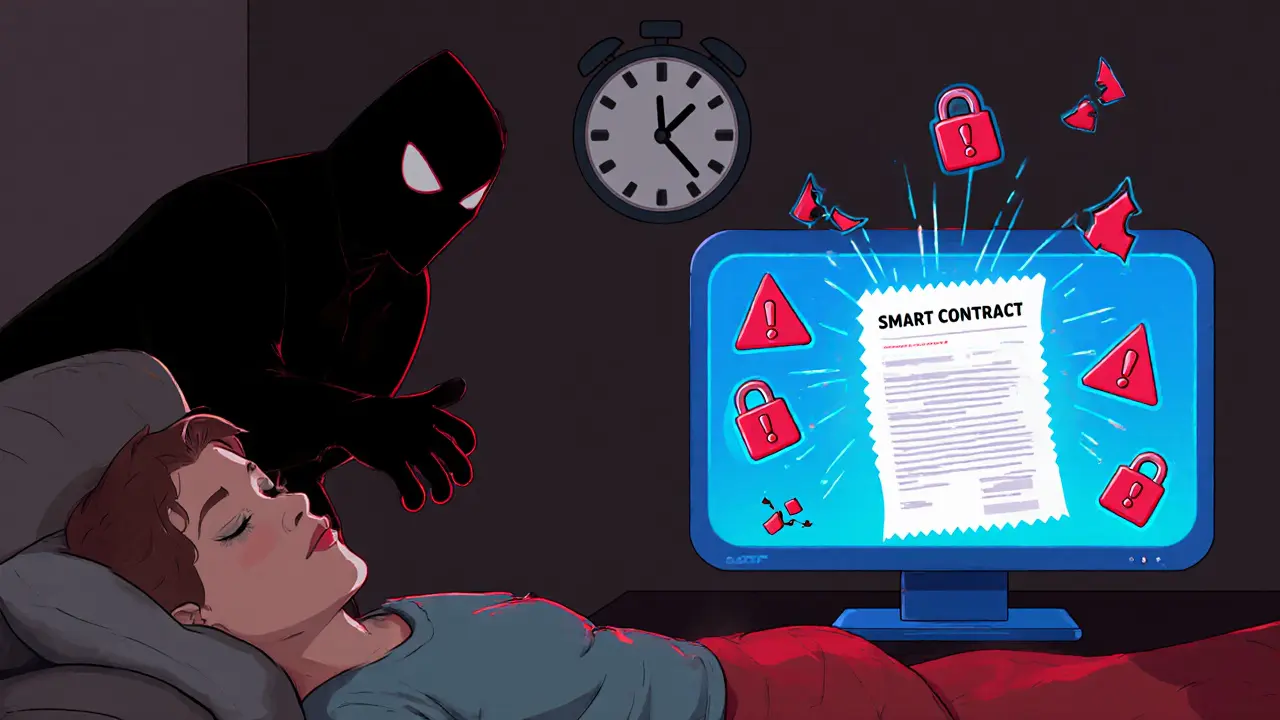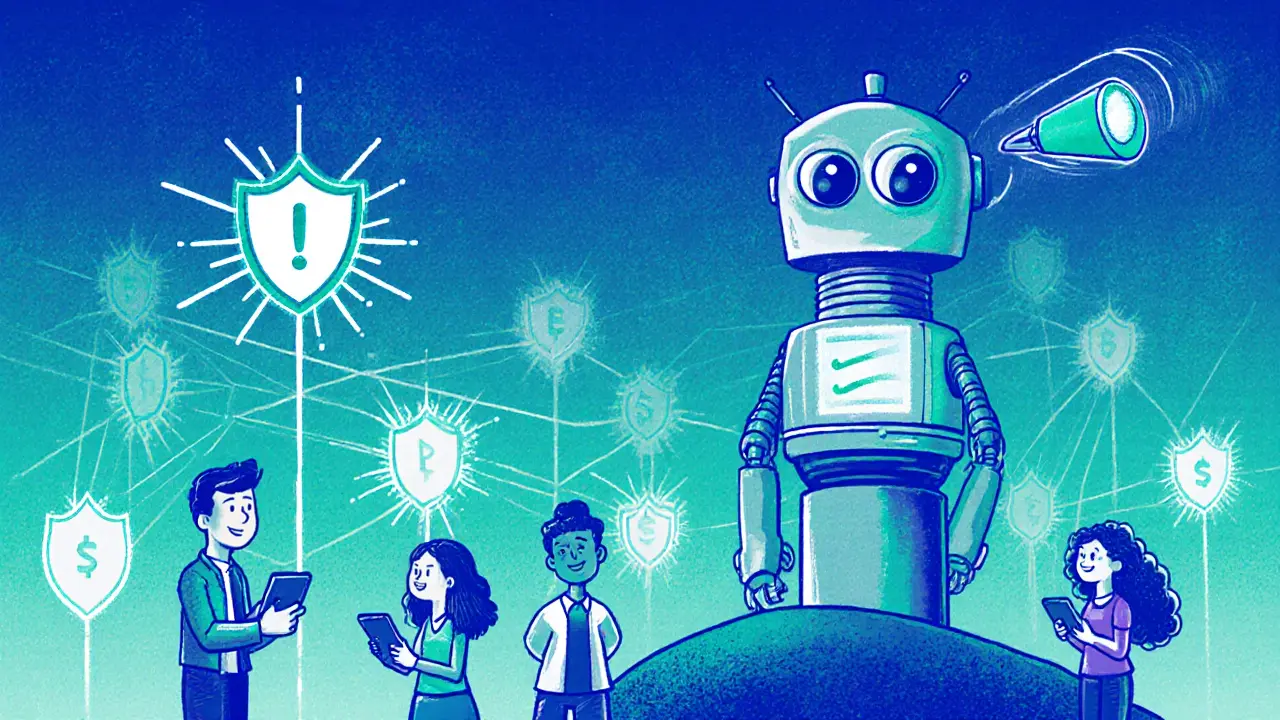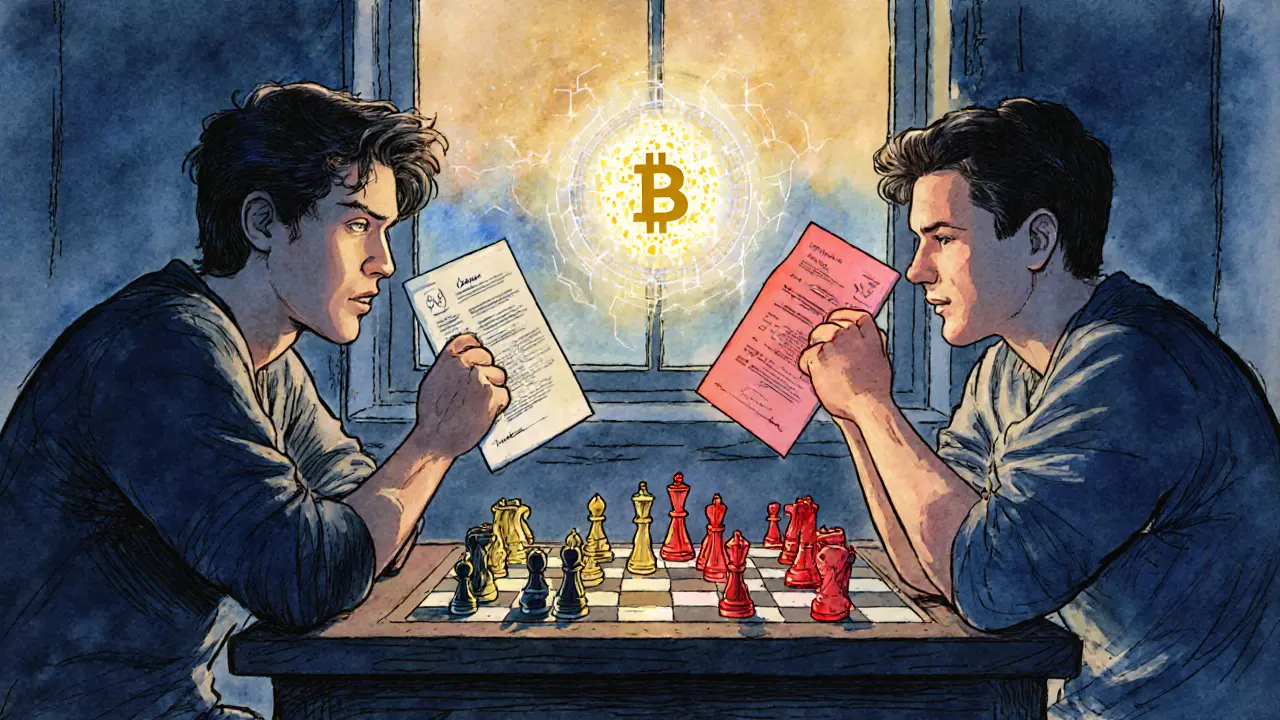State Channel Inactivity Risk Calculator
State channels let you transact off-chain with near-zero fees, but security depends on your vigilance. If you go offline during a channel's dispute window, you risk losing funds. This calculator shows your risk based on your usage patterns.
When you send money over a blockchain like Bitcoin or Ethereum, every transaction gets recorded on a public ledger. That’s secure-but slow and expensive. State channels solve that problem by letting you transact off-chain, instantly and cheaply. But here’s the catch: state channel security doesn’t rely on miners or validators. It relies on you.
How State Channels Work (Without a Third Party)
Imagine two friends playing a series of chess games. Instead of recording every move on a public board, they keep their own score sheet. Each time they play, they both sign the updated score. If one tries to cheat by showing an old score, the other can prove it’s fake using the latest signed version. That’s a state channel. In blockchain terms, two participants lock up funds in a smart contract on the main chain. Then they exchange signed updates-like balance changes-that don’t go on-chain. Only the final state gets submitted. This lets them do hundreds of transactions in seconds, with fees close to zero. The Lightning Network for Bitcoin and Raiden for Ethereum are the most well-known examples. The magic isn’t in the technology alone. It’s in the trust model. You don’t need to trust the other person. You trust cryptography. Each update must be signed by both parties. The latest signed version always overrides older ones. If someone tries to cheat by broadcasting an old state, the system gives you a window to prove they’re lying-and punish them.The Security Backbone: Signatures, Disputes, and Penalties
Every state channel runs on three core security layers. First, multisignature contracts. Funds are held in a contract that requires both (or all) participants to sign before anything changes. No single person can withdraw without the other’s approval. Second, cryptographic signatures. Every transaction update is signed with private keys. If you lose your latest signed state, you can’t prove what your balance really was. That’s why keeping your latest state secure isn’t optional-it’s critical. Third, the dispute window. If your channel partner tries to close the channel with an old balance, you have time to respond. In Ethereum’s Raiden Network, that’s about 200 blocks-roughly 40 minutes. On Bitcoin’s Lightning Network, it’s 144 blocks, or about 24 hours. During that time, you submit a fraud proof: the latest signed state. The smart contract then slashes the cheater’s deposit and gives it to you. This system works because it turns trust into a game of incentives. Cheating costs money. Honest behavior pays off. That’s why state channels are called “trust-minimized.” You don’t need to trust the other person-you just need to trust that they’ll lose more than they gain by lying.Why You Must Stay Online (And What Happens If You Don’t)
Here’s where most people get burned. State channels only work if you’re watching. If you go on vacation for a week and your channel partner tries to close with an outdated balance, you won’t be there to challenge it. The contract will assume you’re okay with it-and your funds are gone. Real cases happen. In Q3 2022, BitRefinery documented 37 users who lost a combined $18,400 because they didn’t monitor their Lightning Network channels during travel. One Reddit user, u/LightningUser99, lost 0.05 BTC after being offline for 72 hours. That’s not theoretical. That’s happened. The Ethereum Foundation recommends a maximum 30-day window for inactive channels. Beyond that, the risk of state revocation spikes. You can’t just set it and forget it. You need to be online, or have someone monitoring for you. That’s where watchtowers come in. These are third-party services that watch your channels on your behalf. They detect fraud and submit fraud proofs automatically-for a small fee. As of August 2023, 38% of active Lightning Network channels used watchtowers. Ethereum’s upcoming Protocol 3.0 will bake this into the core system. But even watchtowers aren’t foolproof. They’re not free. And if you use one you don’t trust, they could theoretically collude with your channel partner. The best setup? Use multiple watchtowers, or run your own monitoring tool.
State Channels vs. Other Layer 2 Solutions
State channels aren’t the only way to scale blockchains. Rollups and sidechains are alternatives-but they work differently. Rollups (like zkSync or Optimism) batch hundreds of transactions and post a single cryptographic proof to the main chain. They’re great for DeFi because anyone can verify the proof. But your transactions are still visible to the public. State channels? Only you and your channel partner see them. That’s better for privacy. Sidechains run their own blockchains with separate validators. You have to trust those validators not to steal or freeze your funds. State channels? No validators. Just you and the other person. That’s better for trust. But here’s the trade-off: state channels only work with a fixed set of participants. You can’t join a state channel with someone you’ve never met. Rollups can handle open participation. That’s why rollups dominate DeFi. State channels dominate micropayments, gaming, and peer-to-peer transactions where you know who you’re dealing with. According to Blockchain Council’s 2023 report, state channels handle about 15% of all Layer 2 volume-mostly in niche, high-frequency use cases. They’re not meant to replace Ethereum’s main chain. They’re meant to handle the stuff that’s too cheap or too fast to put on-chain.Real-World Risks: What Can Go Wrong
Even with all the safeguards, state channels have hidden flaws. One big issue is state loss. If your device crashes, your backup fails, or you accidentally delete the latest signed state, you can’t recover your funds. There’s no password reset. No customer support. Just silence. A 2022 Ethereum Foundation audit found that 43% of state channel implementations had bugs in how they handled state revocation. That means even well-built apps can accidentally let you lose money. Another risk is griefing. A malicious participant can keep opening and closing channels without ever transacting, forcing you to pay gas fees every time. Or they can delay signing updates, blocking you from using your funds. These attacks don’t steal money-they just make it annoying to use the system. And then there’s the human factor. Most users aren’t cryptographers. They don’t understand signatures, challenge windows, or fraud proofs. A 2023 University of Cambridge study found that 89% of Lightning Network users had advanced blockchain knowledge. That’s not a bug-it’s a barrier. If state channels are going to go mainstream, they need to hide this complexity.
What’s Next for State Channel Security
The future isn’t about making state channels simpler. It’s about removing the burden from users. Watchtowers are the first step. But they’re still centralized in practice. New research from Stanford (July 2023) shows non-custodial monitoring systems that detect fraud with 99.98% accuracy-without ever holding your keys. These could become the new standard. Projects like Perun are experimenting with multi-party state channels, where more than two people can transact in a single network. That opens up possibilities for group payments, decentralized marketplaces, and gaming economies-all without on-chain fees. Gartner predicts that by 2025, state channels will handle 40% of all blockchain-based gaming transactions. Why? Because games need instant, private, low-cost transactions. And state channels deliver that-when used right. But the Ethereum Foundation is clear: state channels won’t replace rollups. They’re not meant to. They’re a precision tool for specific jobs. Use them for payments between people you know. Use rollups for DeFi with thousands of users.Are State Channels Right for You?
If you’re sending small, frequent payments-like tipping content creators, buying in-game items, or paying for API calls-state channels are unbeatable. They’re fast, cheap, and private. But if you’re holding crypto long-term, or you’re not comfortable managing your own security, skip them. The risk of losing funds due to inactivity is real. And there’s no safety net. The best advice? If you use a state channel:- Always keep your latest signed state backed up in multiple places.
- Use a watchtower service-even if it costs a few cents per month.
- Check your channel status at least once a week.
- Never leave a channel inactive for more than 30 days.
- Test recovery procedures before you lock up real funds.
Are state channels safe if I don’t monitor them?
No. If you don’t monitor your state channel and your counterparty tries to close it with an outdated balance, you won’t be able to challenge it. The smart contract will finalize the false state, and you’ll lose your funds. Monitoring is mandatory-not optional.
Can I lose money even if I’m honest?
Yes. If you lose your latest signed state update-because your device crashed, your backup failed, or you deleted it-you can’t prove your correct balance. Even if you’re completely honest, you can still lose funds. That’s why backing up your state is critical.
How do watchtowers work?
Watchtowers are third-party services that monitor your state channels for fraud. If your counterparty tries to cheat by submitting an old state, the watchtower detects it and submits a fraud proof on your behalf. You pay a small fee for this service, but you don’t need to stay online constantly. Some are custodial (they hold your data), others are non-custodial (they only see public data). Choose non-custodial for better security.
Are state channels better than rollups?
It depends. State channels are better for privacy and speed between two known parties. Rollups are better for open participation, like DeFi apps with hundreds of users. Rollups also inherit full blockchain security. State channels require you to actively protect yourself. Use state channels for micropayments and gaming. Use rollups for everything else.
Why aren’t state channels used more widely?
Because they’re hard to use safely. Most users don’t understand the need to monitor channels, back up states, or respond to disputes. The learning curve is steep. Also, they only work between fixed participants, which limits their use in open ecosystems. Until the UX improves and automation becomes standard, adoption will stay limited to tech-savvy users.

Man, I just set up a Lightning channel last week and already feel like I’m babysitting a nuclear reactor. You’re right - it’s not ‘set and forget.’ I thought crypto was supposed to make life easier. Turns out it just moved the work from banks to my phone.
So… if I’m offline for a weekend and my buddy tries to cheat, I just lose everything? No second chances? No grace period? I mean, I get the crypto ethos - ‘not your keys, not your coins’ - but this feels like a trap for normal people who have jobs and sleep.
Don’t panic - watchtowers are your friend. I use two: one from Lightning Labs and one self-hosted on a Raspberry Pi. Costs me $0.50/month total. No drama. No stress. And I’ve slept through three vacations without losing a sat. You don’t need to be a dev - just set it up once and walk away.
Oh, darling, you’re all so *adorable* with your little watchtowers and your ‘backup your state’ mantras. But let’s be real - this isn’t finance. It’s a high-stakes game of chicken where the only winner is the person who remembers to check their phone. We’ve turned financial sovereignty into a full-time job for people who can’t even remember to pay their Netflix bill. How is this progress? It’s not. It’s performance art with a blockchain.
Okay so I just read this whole thing and I’m like… wait so if my phone dies and I didn’t back up my latest signed state… I’m just SOL? Like, no way to recover? No recovery phrase? No ‘forgot password’ link? That’s wild. I mean, I get it’s crypto but… I just bought a new iPhone and I didn’t even think about backing up my channel state. I’m sweating. Like… literally. I’m gonna go backup right now. I’m not even kidding. This is real. I just lost 0.003 BTC last month because I closed a channel wrong. Don’t be me.
Let’s be honest - state channels are the crypto equivalent of a trust fall with a stranger who’s holding a knife. You’re supposed to ‘trust the system’ but the system requires you to be a 24/7 security guard with a PhD in cryptography. Meanwhile, rollups are just… doing the job. Quietly. Efficiently. Without making you feel guilty for going to the bathroom.
The fundamental flaw in state channel adoption isn’t technical - it’s epistemological. The system assumes that users possess a meta-awareness of their own negligence. But human beings are not rational agents. We forget. We procrastinate. We assume ‘it’ll be fine.’ The architecture is sound, but the human interface is a tragedy of the commons. Until we design for fallibility - not perfection - state channels will remain a niche tool for the paranoid and the privileged.
Bro, imagine you’re in Lagos, your phone dies, and your Lightning channel gets hacked because you didn’t monitor it. Now you ain’t got no money for jollof rice. That’s not ‘decentralized finance’ - that’s digital colonialism with a side of FOMO. We need systems that work for people who don’t live in Silicon Valley and don’t have three backup drives.
Wait so if I use a watchtower… am I just outsourcing my paranoia? Like… what if the watchtower gets hacked? Or just ghosts me? Isn’t that just moving the trust from one person to another? …I think I’m gonna stick with on-chain. At least I know who’s to blame when it goes wrong.
Let me tell you something about trust - it’s not a thing you give. It’s a thing you *extract*. State channels extract trust from the user by making them the last line of defense. And that’s beautiful. In a world where algorithms manipulate us into buying shoes we don’t need, here’s a system that demands we be awake, aware, and accountable. It’s not broken - it’s a mirror. And most people can’t stand to look in it.
So… I lost my entire channel balance because I went on a cruise for 5 days. No signal. No backup. Just… silence. And now I’m sitting here in the middle of the Atlantic, crying into my lobster tail, wondering if I’m just… not cut out for this. Like, am I too human for crypto? Should I just go back to using PayPal? I miss when money was just… money. Not a responsibility. Not a burden. Not a reason to check your phone every 2 minutes. 😭
Watchtowers? LOL. You think they’re neutral? Nah. They’re just new middlemen with better PR. And guess what? The ones that don’t charge you? They’re selling your data. Or they’re owned by the same VC that owns the wallet you use. Crypto’s ‘decentralization’ is just a marketing term for ‘we moved the monopoly from banks to tech bros.’
Hey, I know it’s intense, but you’re not alone. I used to stress about this too - until I started using a free open-source monitor on my old laptop. It’s not perfect, but it pings me if something’s off. And I sleep better now. You don’t need to be a genius - just consistent. And hey, if you mess up? Learn. That’s the whole point. We’re building the future together, one failed channel at a time. 💪
you know what i think? state channels are like a marriage. you need to talk, you need to check in, you need to not be a jerk. if you dont, you lose everything. its not about tech. its about being a good person. and most people? they just wanna take and not give. thats why it fails. not the system. the users.
It is imperative to underscore that the foundational principle underlying state channels - namely, the delegation of security responsibility to the end-user - represents a paradigmatic shift in cryptographic governance. While this model undeniably enhances privacy and reduces latency, it simultaneously imposes a non-trivial cognitive burden upon participants who may lack technical acumen. The imperative for scalable, non-custodial monitoring infrastructure is therefore not merely an engineering challenge, but an ethical obligation to ensure equitable access to decentralized financial primitives.